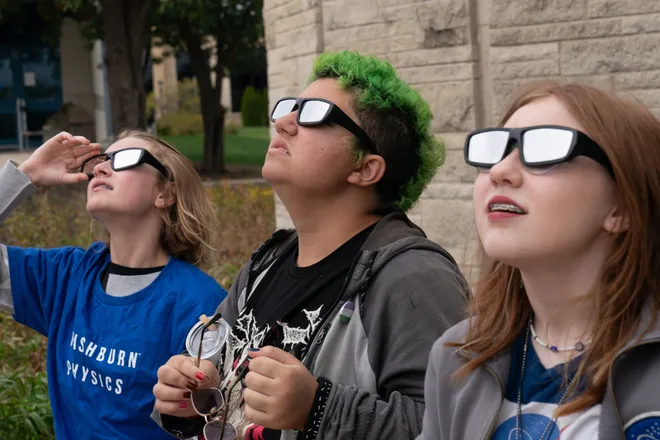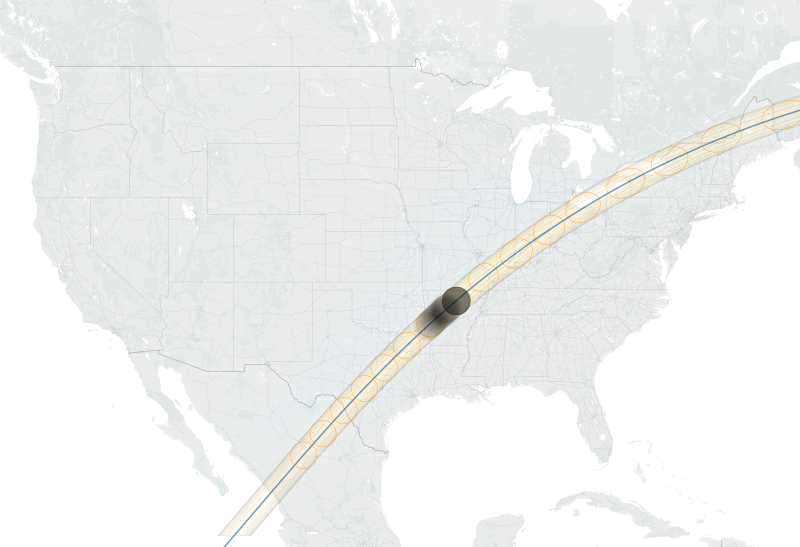When is the next total solar eclipse in the US after 2024? Here's what you need to know.
A total solar eclipse will cross North America on April 8, bringing a spectacle over the homes of tens of millions of Americans.
The eclipse's path of totality will travel over a portion of northern Mexico before entering the U.S. It will pass into Texas around 1:30 p.m. local time before covering portions of the Midwest and east coast. It will then touch southeast Canada before moving out to sea, according to NASA.
The eclipse's path will cross 13 states from Texas to Maine, and experts say the southern end of the path has the best chances for good viewing.
Those who don't live on the path or can't travel to a place that is, might be wondering when their next chance to see a total solar eclipse will come. Here's what we know.
When is the next total solar eclipse visible from the U.S.?
It will be 20 years before there's a chance to witness a total solar eclipse in the United States again.
According to NASA, after the total solar eclipse on April 8, 2024, the next total solar eclipse that can be seen from the contiguous U.S. will be on Aug. 23, 2044.
2044 total solar eclipse path of totality
Unfortunately, the 2044 total solar eclipse won't have the broad reach across the U.S. as the 2024 eclipse.
The Planetary Society, a nonprofit involved in research, public outreach and political space advocacy, says that during the 2044 eclipse, the path of totality will only touch three states.
The eclipse will begin in Greenland, sweep through Canada and end around sunset in Montana, North Dakota and South Dakota.

What is a total solar eclipse?
Any celestial object like a moon or a planet that passes between two other bodies can create an eclipse by obscuring the view of objects like the sun.
In the event of a solar eclipse, the moon comes in between the Earth and the sun, blocking its light from reaching a small part of our planet. Partial eclipses, when some part of the sun remains visible, are the most common, making total eclipses a rare sight to behold.
Total eclipses can lead to a period of darkness lasting for several minutes, during which time nocturnal animals stir while confused birds and insects may fall silent, NASA says.
When a solar eclipse reaches totality, people are able to see the sun’s outer atmosphere called the corona, which is usually obscured by the sun's bright surface. This offers scientists an uncommon opportunity to study the corona.
What states are on the 2024 eclipse path of totality?
Mexico's pacific coast will be the first location in continental North America to experience totality, which will occur at about 11:07 a.m. PDT, according to NASA.
As the moon's shadow travels northeast, totality in the U.S. will begin in Texas at 1:27 p.m. CDT. The path will cut diagonally across the country, traveling through Oklahoma, Arkansas, Missouri, Illinois, Kentucky, Indiana, Ohio, Pennsylvania, New York, Vermont and New Hampshire.

In the United States, the eclipse's path will end in Maine at 3:35 p.m. EDT before visiting the maritime provinces of Canada, according to estimates.
See interactive maps of the 2024 path.
Contributing: Doyle Rice, Ramon Padilla & Janet Loehrke, USA TODAY
Disclaimer: The copyright of this article belongs to the original author. Reposting this article is solely for the purpose of information dissemination and does not constitute any investment advice. If there is any infringement, please contact us immediately. We will make corrections or deletions as necessary. Thank you.




